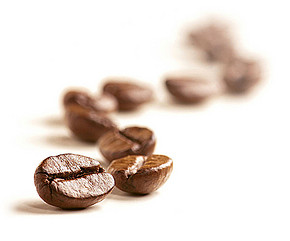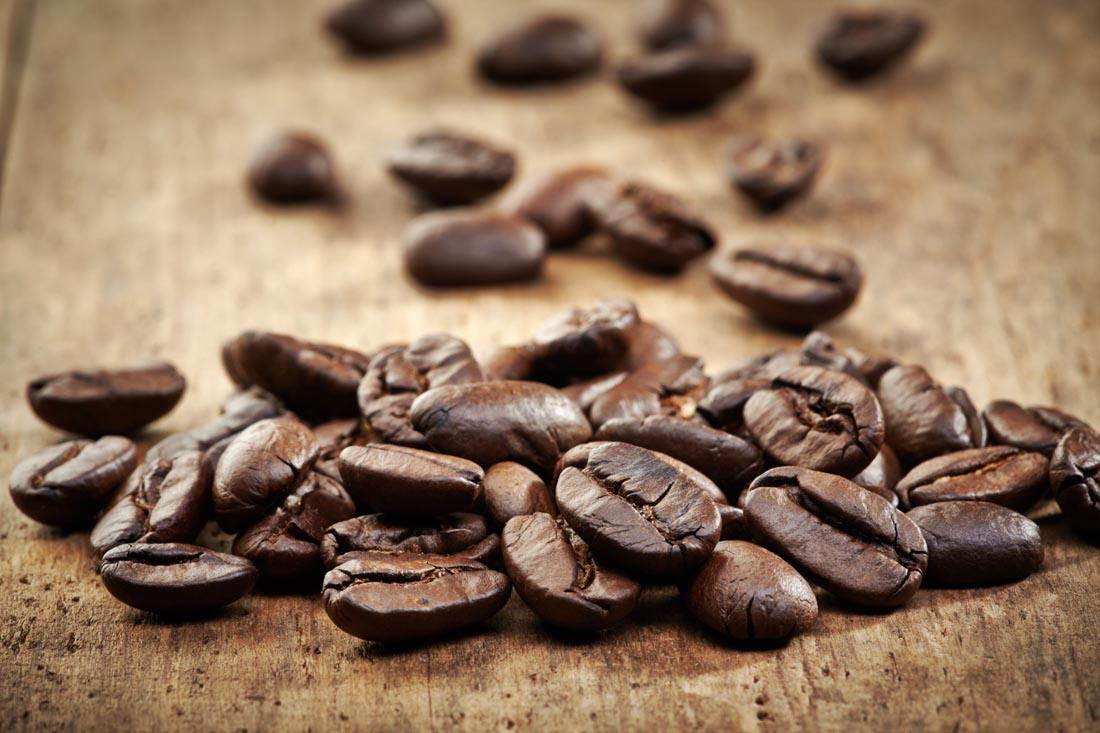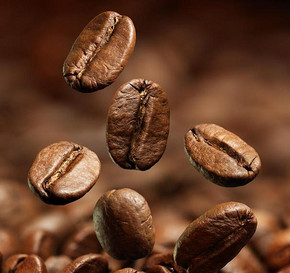What are the processing techniques for raw beans of Brazilian coffee?
Follow the caf é (Wechat official account vdailycom) and found that Beautiful Cafe opened a small shop of its own.
In the growth stage of coffee fruit, artificial picking and processing technology will not only bring a unique taste to the coffee, but also take away some unique flavor of the coffee itself. In my opinion, the processing technology of raw coffee beans is one of the key factors to determine the quality of coffee. If the workers are skilled enough, the processing of raw beans can stimulate the original and rich aroma of coffee, highlighting subtle taste differences. I think the treatment of raw coffee beans is one of the most important and magical links in the whole coffee industry chain. Over the past period of time, I have been working on raw bean processing processes around the world, and I have found that each process is unique, and growers from each region will, according to the characteristics of the local natural environment, research and develop local processing technologies that are only suitable for local use, and it is du's unique raw bean processing technology that makes coffee tastes different from one place to another. The treatment of raw beans is like the brewing process of beer, different methods will lead to different tastes of coffee. Most of us have a certain understanding of natural solarization, honey treatment, washing and other processing processes, if you are a beginner, please refer to professional coffee knowledge books, from which you can learn a lot about the basics of raw bean treatment.

Today, I would like to discuss with you in depth the nuances of various raw bean processing processes. Brazil has always been one of my favorite producing areas, so today I will take Brazil as the theme. I would like to explain to you how the local people pick and handle coffee fruits during the harvest season. One of the reasons why Brazil leads the world in coffee picking and processing technology is the high level of mechanization of the Brazilian coffee growing industry, and now that labor costs remain high around the world, mechanization is essential for the labor-intensive industry of coffee cultivation. Most of the coffee in Brazil is picked mechanically, while the rest of the country uses the "peeling method" (that is, peeling off the coffee fruit on the whole branch at once). For those who are used to picking carefully during the picking process, Brazil's fruit-picking techniques are a little barbaric. You may think this is a departure from the nature of boutique coffee, but as long as you have tasted Brazilian coffee, you will not doubt it.
The Brazilian coffee industry follows the principle of picking first and screening later, but in other Latin American countries, people pick only fully ripe fruit, and if it is not mature enough, growers will leave the fruit on the tree. Why is there such a big difference between the two methods? The reason lies in the picking and treatment of raw beans. First, in smaller boutique coffee countries other than Brazil, it is almost impossible to screen raw coffee beans after picking, so workers must ensure that coffee is strictly screened at the time of picking. Second, pickers in other countries pick coffee when the sugar content reaches 19-23:00, while growers in Brazil start picking when the sugar content reaches 23-30. The fruit whose sugar content reaches this value has extremely high sweetness, and the maturity of the fruit is almost perfect. Brazilian pickers have a lot of experience. They will not pick the fruit until the least amount of green fruit on the coffee tree, and make sure that the overripe coffee beans have fallen from the tree. This method is extremely demanding in the eyes of workers, and only workers with enough experience can do perfect picking.
The four most common treatment methods of Brazilian coffee are: natural solarization, desizing, semi-washing and water washing, of which natural solarization is the most popular. Natural solarization is very popular in Brazil's two main producing areas, Serrado Minero (Cerrado Mineiro) and Mogiana Paulista (Mogiana Paulista), because the harvest season is the dry season of the year.
Natural solarization is very different from the water washing used in other Central American countries and Colombia, and since the word "Unwashed" does not fully summarize the essence of this process, Brazilians eventually chose the same term "Natural" as Ethiopian coffee. However, it should be noted that there is a difference between the natural sun method in Brazil and the traditional Ethiopian sun method. What Brazilians call "natural sun" refers to the process of picking coffee rather than the traditional treatment process, because Brazilians allow coffee to fully absorb sunlight on the branches and fully mature.
In Brazil, people put the freshly picked fruit on the terrace to dry, and the dried fruit is called "Boia" (English "ball", that is, "ball"). As I said before, all coffee is picked unpicked, so many of the coffee fruits are overripe during the drying process and dry like raisins. In more modern plantations, workers screen the coffee before drying and peel off the immature fruit by putting all the fruit in a water tank, which floats on the surface of the water because of its lighter weight. Workers can use siphon devices to remove the floating fruit. But in relatively backward plantations, workers do not have enough cash equipment to completely peel off immature fruit, which is why many Brazilian sun-cured coffee are mixed with so many immature beans.
Traditionally, sun-treated coffee usually tastes of leather, tobacco and wood, but the Brazilian natural sun gives the coffee a sweet taste and a balanced fruit aroma. Dr. Flavio Flavio Borem, from the Federal University of Lavelas (UFLA), has conducted in-depth research on the natural sun treatment of raw coffee beans. According to his theory, when using the natural sun method to treat raw coffee beans, in order to ensure the high quality of coffee, people must strictly control the metabolic rate of coffee beans in the drying process to maximize the sweetness, taste complexity and mellow thickness of coffee. Only by strictly controlling the external temperature in the drying process and the speed of fruit drying, can people ensure the integrity of coffee cell structure. In the process of drying, the cell wall of coffee cells is easily damaged. Once the cell structure is destroyed, the quality of coffee can not be guaranteed.
Next, let's talk about desizing. The desizing method was introduced to Brazil 25 years ago by Pinhalense, a well-known machinery and equipment manufacturing company. Desizing is the second most popular way to treat raw coffee beans in Brazil, and Brazilians like to call it "Cereja Descascado" ("Descascado" means "peel" and "Cereja" means "fruit"). In Central American countries, the desizing method is also known as "honey treatment". When using this method to deal with raw beans, the desizing machine is essential, and the coffee treated by this method is extremely sweet and unique in flavor. The desizing machine separates the peel and pulp of the coffee fruit from the raw beans. After completing the desizing step, people will rinse the mucous membrane on the surface of raw beans with water to the desired level before drying. What is unique about this method is that raw beans do not have to be fermented. As there is still a small amount of mucous membrane attached to the surface of raw beans, the drying process of raw beans must be fast to prevent coffee from spoiling and mildew. Once dried, raw beans are placed in a wooden box called "Tulhas" for a period of time to make the taste and aroma of the coffee more constant.
Semi-washing is now an outdated method of raw bean treatment in Brazil, which is easy to be confused with desizing, but in my opinion, semi-washing still has some uniqueness. The coffee treated by semi-washing method has a very mellow taste and high sweetness. this method requires the grower's operation technique and experience very high. if something goes wrong, the coffee will become difficult to swallow. Like the desizing method, people first use a desizing machine to desize the fruit, but the difference is that the semi-washing method requires the removal of as much mucous membrane as possible from the peel, pulp and surface layer of raw beans. In Central America, people wash the fruit directly with a washing machine after the fruit is desized, so this method is also known as "mechanical washing". The processed raw coffee beans are very clean and can begin to dry without fermentation. Semi-washed coffee dries quickly at constant temperature, so it tastes purer, less moldy and fruity than other slow-drying coffees.
Finally, let's talk about washing. Although many Brazilian coffee growers have recently expressed a strong interest in washing, the demand for this kind of coffee is still not high in domestic and foreign markets. The reason is that washed Brazilian coffee has a poor reputation in the international market, and washing technology in Brazil started relatively late, not yet mature. The treatment of washed coffee is very similar to that of semi-washed coffee, but it needs to be fermented to remove mucus from the surface of raw beans. Washed coffee usually has a pure taste and pleasant acidity.
These are the four most common methods of raw bean treatment in Brazil. Once the treatment is completed, only parchment is left on the outside of the raw bean, and the coffee will be finally screened to meet the quality coffee standard. Coffee beans with parchment are sent to a unified drying plant, where coffee is finally sorted, bagged and ready for export. Factory workers will first use vibration screening to grade coffee according to the density of raw beans. You know, density is one of the important criteria to measure the quality of coffee. The graded coffee beans will be cleaned again, and the cleaned coffee beans will be sent to the laboratory for final color grading. The chromometer uses a laser to detect defects or stains on the surface of coffee beans. Generally speaking, in Brazil, the level of mechanization of raw bean sorting is very high. Machining can not only avoid unnecessary mistakes, but also help solve the problem of labor shortage caused by high wages.
Important Notice :
前街咖啡 FrontStreet Coffee has moved to new addredd:
FrontStreet Coffee Address: 315,Donghua East Road,GuangZhou
Tel:020 38364473
- Prev

Introduction of Brazilian coffee bean producing areas, Brazilian coffee taste and flavor
Following Cafe Review (Wechat official account vdailycom) found that Beautiful Cafe opened a small shop of its own Brazilian Coffee refers to coffee produced in Brazil. There are many kinds of coffee in Brazil, and most of them are sun-dried without washing, and they are classified according to the name of the state of origin and the port of transport. Brazil has 21 states and 17 states produce coffee, but four of them produce the most coffee.
- Next

Brazilian Coffee Bean Features Grades and Stories
Pay close attention to coffee comment (Weixin Official Accounts vdailycom ) and find that a beautiful coffee shop opens its own small shop Brazilian coffee beans Brazilian coffee beans refer to all coffee beans grown in Brazil. In addition to Sanduo Division, Brazilian beans are mostly cheap coffee. Mixed coffee beans that can be used for mass production, mostly for heavy roasting. The main ingredient of instant coffee is Brazilian coffee beans. coffee
Related
- Detailed explanation of Jadeite planting Land in Panamanian Jadeite Manor introduction to the grading system of Jadeite competitive bidding, Red bid, Green bid and Rose Summer
- Story of Coffee planting in Brenka region of Costa Rica Stonehenge Manor anaerobic heavy honey treatment of flavor mouth
- What's on the barrel of Blue Mountain Coffee beans?
- Can American coffee also pull flowers? How to use hot American style to pull out a good-looking pattern?
- Can you make a cold extract with coffee beans? What is the right proportion for cold-extracted coffee formula?
- Indonesian PWN Gold Mandrine Coffee Origin Features Flavor How to Chong? Mandolin coffee is American.
- A brief introduction to the flavor characteristics of Brazilian yellow bourbon coffee beans
- What is the effect of different water quality on the flavor of cold-extracted coffee? What kind of water is best for brewing coffee?
- Why do you think of Rose Summer whenever you mention Panamanian coffee?
- Introduction to the characteristics of authentic blue mountain coffee bean producing areas? What is the CIB Coffee Authority in Jamaica?

